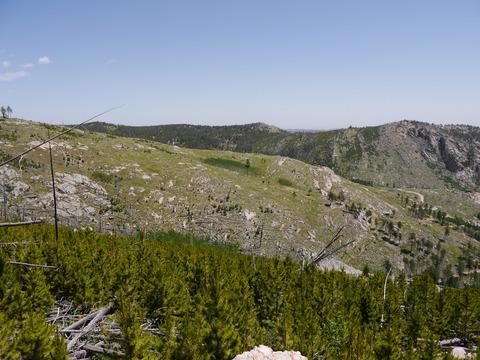Our official English website, www.x-mol.net, welcomes your
feedback! (Note: you will need to create a separate account there.)
Long-term empirical evidence shows post-disturbance climate controls post-fire regeneration
Journal of Ecology ( IF 5.3 ) Pub Date : 2021-08-25 , DOI: 10.1111/1365-2745.13771 Jaclyn Guz 1 , Nathan S Gill 2 , Dominik Kulakowski 1
中文翻译:

长期经验证据表明,扰乱后的气候控制可在火灾后再生
更新日期:2021-08-25
Journal of Ecology ( IF 5.3 ) Pub Date : 2021-08-25 , DOI: 10.1111/1365-2745.13771 Jaclyn Guz 1 , Nathan S Gill 2 , Dominik Kulakowski 1
Affiliation

|
- Increased wildfire activity and climate change have intensified disturbance regimes globally and have raised concern among scientists and land managers about the resilience of disturbed landscapes. Here we test the effects of climate, topographic variation and pre-fire stand structure on regeneration in lodgepole pine (Pinus contorta var. latifolia) forests following high-severity fire over the past seven decades.
- We surveyed lodgepole pine regeneration 8–67 years after eight high-severity fires in western Colorado and southern Wyoming. We used dendroecological methods and machine learning to (a) identify temporal trends in post-fire regeneration and (b) examine influences of climate on post-fire regeneration, with focus on post-fire establishment, initial post-fire density and radial growth.
- All burned sites reached a median stocking density of ≥150 seedlings/ ha, but there was a large range of spatial heterogeneity, with regeneration being absent or scarce in many plots, implying a trend of increasing patchiness with likely cascading effects on subsequent patterns and processes. Our analysis indicated that (a) post-fire regeneration is influenced by pre-fire stand structure (stand age and density), elevation and post-fire minimum temperature; (b) pre-fire densities of >14,000 stems/ha promoted successful stocking (≥150 seedlings/ha) and reduced lag between the disturbance and initial regeneration; and (c) minimum post-fire temperatures >−1.6°C reduced lag of initial regeneration and promoted initial radial growth.
- Synthesis. Our study demonstrates that lodgepole pine in high-elevation forests are regenerating following fires under recent climatic trends, but that regeneration is affected by post-fire climatic conditions. Importantly, forest patchiness may be increasing in a way that affects future ecological dynamics and may compromise the resilience of these systems.
中文翻译:

长期经验证据表明,扰乱后的气候控制可在火灾后再生
- 野火活动的增加和气候变化加剧了全球的干扰机制,并引起了科学家和土地管理者对受干扰景观恢复力的担忧。在这里,我们测试了气候、地形变化和火灾前林分结构对过去七年高强度火灾后黑松(Pinus contorta var. latifolia)森林再生的影响。
- 我们调查了科罗拉多州西部和怀俄明州南部发生八次严重火灾后 8-67 年的黑松再生情况。我们使用树木生态学方法和机器学习来 (a) 确定火灾后再生的时间趋势和 (b) 检查气候对火灾后再生的影响,重点是火灾后的建立、火灾后的初始密度和径向生长。
- 所有被烧毁的地点都达到了 ≥ 150 株幼苗/公顷的中位放养密度,但存在很大范围的空间异质性,许多地块没有或很少再生,这意味着斑块增加的趋势可能对后续模式和过程产生连锁效应. 我们的分析表明 (a) 火灾后再生受火灾前林分结构(林分年龄和密度)、海拔和火灾后最低温度的影响;(b) >14,000 茎/公顷的火灾前密度促进成功放养(≥150 苗/公顷)并减少干扰和初始再生之间的滞后;(c) 最低火灾后温度 >-1.6°C 减少了初始再生的滞后并促进了初始径向生长。
- 合成。我们的研究表明,在最近的气候趋势下,高海拔森林中的黑松在火灾后正在再生,但这种再生受到火灾后气候条件的影响。重要的是,森林斑驳可能会以影响未来生态动态的方式增加,并可能损害这些系统的恢复能力。









































 京公网安备 11010802027423号
京公网安备 11010802027423号